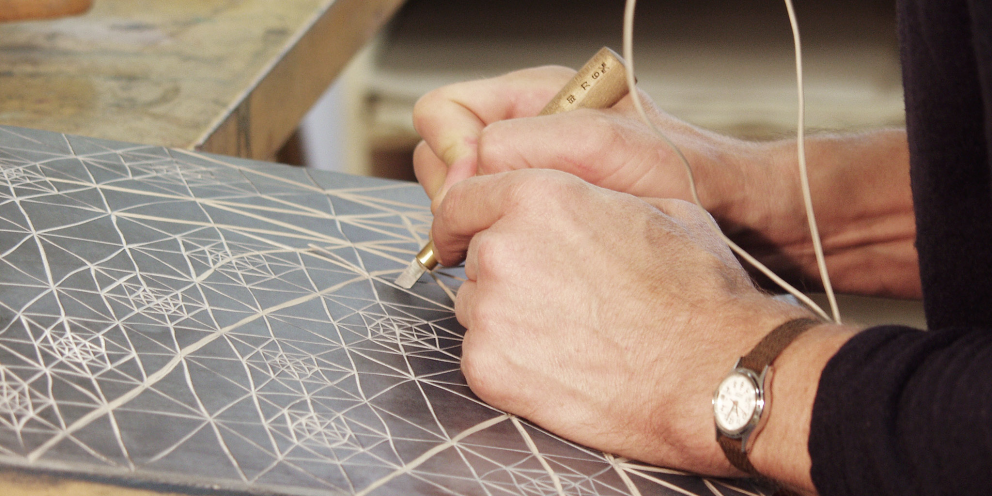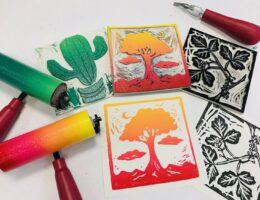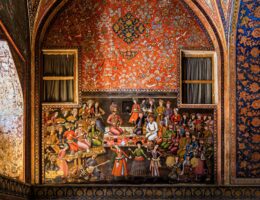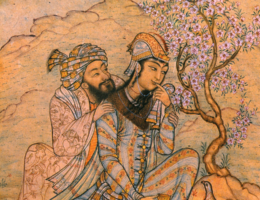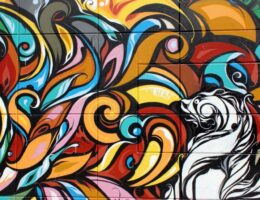IRAN ART EXHIBITION: ALL PRINTMAKING TECHNIQUES ARE INTRODUCED HERE
An original print is a work of art on paper which has been conceived by the artist to be realized as a print, rather than as a reproduction of a work in another medium. Prints are produced by drawing or carving a composition on a carrier surface (the matrix) such as a wood block, metal plate or stone. This surface is then inked and the image is transferred to paper by the application of pressure, thus creating an impression or print.
Unlike paintings or drawings, prints usually exist in multiple impressions, each of which is pulled from the inked surface. The total number of impressions made is called an edition. Artists began to sign and number each impression around the start of the 20th century.
Pace Prints has a 50-year history of collaborating with masters and innovators of printmaking. The articles below provide an introduction to the principle techniques of printmaking, all of which are practiced in our workshops.
Relief Techniques
Woodcut
Linocut
Intaglio Techniques
Engraving
Drypoint
Mezzotint
Etching
Aquatint
Spitbite Aquatint
Photogravure
Stencil Techniques
Screenprint
Pochoir
Other Techniques
Monoprint/Monotype
Lithography
Digital Prints
Collagraph
Handmade Paper
RELIEF TECHNIQUES
Relief printing is an umbrella term used to describe the process of printing from a raised surface where the non-image areas have been cut away. Wood and linoleum are traditional matrices used for relief printing.
Woodcut
Woodcut is one of the oldest and simplest forms of printmaking. Various implements (both hand tools and power tools) can be used to cut the image into a block of wood. Paper is placed over the inked block and rubbed by hand or passed through a press to transfer the ink from block to paper to create the image.
IRAN ART EXHIBITION: Woodcut prints and illustrations were first popularized in China in the 9th century and spread to Europe in the 14th century where they became a popular medium for the mass distribution of religious and instructive imagery. The woodcut was developed to an exceptional level of artistic achievement in Japan during the 17th-18th centuries, the ukiyo-e period.
Linocut
The linoblock consists of a layer of linoleum, usually mounted on a block of wood. This soft material is easily carved using knives and gouges. The image is then printed as with a woodcut. Linocuts were popularized by Pablo Picasso.
INTAGLIO
The intaglio printmaking method is characterized by an image being cut into the surface of a plate. Traditionally the matrix is copper, zinc or other metal and the cutting is made with sharp hand tools or by using acid. When ink is applied to the plate, it is held in the incised image areas and wiped from the surface, then printed on a press on dampened paper.
Engraving
For this technique, a metal plate is incised with a tool called a burin. Great skill is required to manipulate the burin as it is pushed at different angles and degrees of pressure to produce a characteristic thin to thick line. Engraving techniques were used by the Greeks, Romans and Etruscans for decorating objects but were not used for printmaking until the mid 15th century in Germany. Engraved images are comprised of a multitude of crisp, fine lines. Shading is traditionally rendered by multiple parallel lines or cross-hatching.
Drypoint
As with engraving, this is a process in which marks are made on a plate using a sharp, pointed instrument. Unlike engraving, in which small amounts of metal are completely removed as the lines are incised, drypoint is characterized by the curl of displaced metal, called the burr, which forms as the line is cut. When inked, the burr creates a distinctive velvety appearance. This technique is usually done on soft copper plates. As the edition is printed, the burr becomes flattened and less distinct.
Mezzotint
IRAN ART EXHIBITION: This is a very beautiful but time-consuming technique, which was most popular in the 18th and 19th centuries for portraiture and reproducing other works of art. In creating a mezzotint, first the entire metal plate is roughened by marking fine lines into the plate in all directions with a rocker (If printed at this stage, the entire paper would be black). Tones are created by burnishing or scraping into the plate, working from black back to middle values and highlights thus allowing the print to have continuous tonal range.
Etching
This process uses acid to bite an image into a metal plate that is coated with an acid-resistant ground. A sharp needle is used to scratch the image through the ground, exposing the metal. The plate is then immersed in an acid bath where the drawn marks are etched. The characteristics of the marks produced depend on the tool used to draw the image, the type of ground coating the plate and the length of time the plate is etched in the acid bath. The etching processes are the most versatile of the intaglio techniques and are often used in combinations.
Aquatint
Aquatint is an etching method introduced in the mid-17th Century to create a more subtle tonal range than could be achieved with line etching techniques. Powdered rosin is applied and heated onto a metal plate; the metal that remains exposed around the melted drops of rosin is bitten in an acid bath, creating a pitted, grainy surface. These pits hold ink and print as areas of tone. The longer the plate is left in the acid, the deeper the “bite” and darker it will print. Shapes are defined by painting on an acid-resistant “stop-out” to prevent surrounding areas from being bitten. A plate may be bitten several times for a range of tones.
Spitbite Aquatint
An intaglio method of painting strong acid directly onto the aquatint ground of an etching plate. Depending on the amount of time the acid is left on the plate, light to dark tones can be achieved. To control the acid application, saliva, or gum arabic can be used. Traditionally a clean brush was coated with saliva, dipped into acid and brushed onto the ground, hence the term “spitbite.”
Photogravure
A photographic technique used with aquatint. The metal plate is heated and dusted with a fine rosin for an aquatint ground. In a darkroom, the image is exposed from a photo positive transparency onto a sensitized gravure carbon tissue or film. This image, in turn, is transferred to the metal plate. The plate is bathed in warm water, causing the unexposed emulsion on the carbon print to be washed away, leaving the image in relief. Ferric chloride is then applied to the plate to eat away the copper in proportion to the highlights and shadows of the gelatin relief. The finished plate is printed by hand by usual intaglio methods. This process has great fidelity to the tonal range of the original photograph.
Direct gravure is a related process where the positive transparency is hand drawn rather than using a photograph.
STENCIL
IRAN ART EXHIBITION: In concept, stencil techniques are one of the simplest forms of printmaking. Stenciling can be any process of printing through an opening in a material or a cutout design. The negative space around the image is blocked out by the solid stencil and the ink is applied through the openings to form the image.
Screenprint (Serigraph, Silkscreen)
Using an image exposed onto a photosensitive emulsion, a stencil is created on a mesh material (now synthetic nylon is used instead of silk) stretched tightly over a frame. The image areas are open mesh through which ink or paint is forced with a squeegee, while the negative space is blocked by the cured emulsion. Screenprints can be made onto almost any surface and allow for great control of ink opacity.
While the most common use of screenprinting is to make graphic images with distinct solid color areas, subtler and more photographic effects can be achieved using halftones to achieve process color. A “rainbow roll” can also be used to created a gradient, where two or more inks colors are blended on top of the screen and printed at the same time with continuous transitions between them.
Pochoir
A direct method for hand coloring through a stencil. The stencil itself is usually knife-cut from thin coated paper, paperboard, plastic, or metal. A stencil and stencil-brush may be used to make create an entire image or to add color passages to a print.
Pochoir is commonly used to eliminate the need for an additional plate for a small element of a print, or where an overlaying color, texture, or opacity is desired.
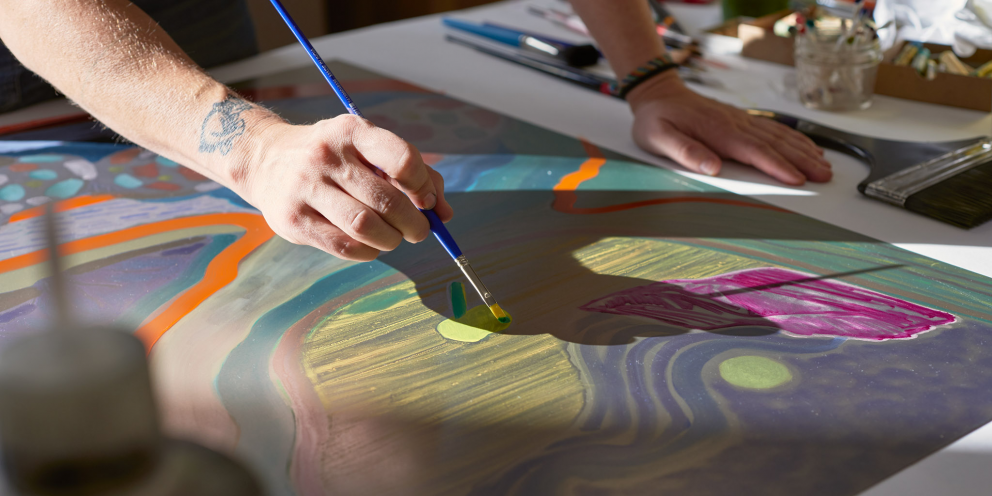
MONOPRINT/MONOTYPE
The key characteristic of a monoprint or monotype is that no two prints are identical, though many of the same elements may be present. All or part of a monoprint is created from a matrix, etched plate, woodblock or such, whereas a monotype image is painted directly onto a smooth unaltered plate and then transferred to paper in a press. These prints are sometimes hand-colored after they are printed.
LITHOGRAPHY (PLANOGRAPHIC)
IRAN ART EXHIBITION: The name lithography comes from the Greek words lithos meaning ‘stone’ and graphein ‘to write.’ Lithography is a chemical process invented in the late 18th century and based on the antipathy of grease and water. The image is drawn on a smooth stone or plate using greasy pencils, crayons, tusche, lacquer, or synthetic materials, or sometimes by means of a photochemical or transfer process. After the image is drawn and processed with a mild etching solution, the stone or plate is dampened and ink is applied with a roller. The greasy drawn image repels the water and holds the oily ink while the rest of the stone’s surface does the opposite. Printing is accomplished in a press similar to that used in intaglio processes.
DIGITAL PRINTS
Many printmaking processes may use digital images as source material or as an intermediate stage in an analog process, such as printing films for a silkscreen or scribing an image onto a matrix or a stencil with a plotter. However, digital prints refer to works where the final image is generated with the aid of a computer-controlled output device such as a printer. An image file is sent to a printer, such as an Epson, which prints it on paper using pigment-based inks.
The archival quality of contemporary digital inks and papers surpasses many analog photographic techniques and some other printing techniques that use inks and solvents that can discolor over time or damage the paper they are printed on. Like any fine art print, digital prints are editioned and curated to scrupulous standards and are signed and numbered by the artist.
COLLAGRAPH
A print matrix can be made from almost any assembly of materials, collaged into an image and printed either as a relief print or intaglio. Surfaces may also be textured with acrylic mediums or materials adhered to a plate. This technique is referred to as collagraph.
IRAN ART EXHIBITION: Collagraph plates can be built up organically and can create varied textures that contrast with the more controlled and precise mark-making associated with other printmaking techniques.
HANDMADE PAPER
The adoption of paper as a substrate for writing and printing has been traced to early 2nd century AD China and Ts’ai Lun, a court official who oversaw the Imperial Library, though its actual invention remains a mystery. It is a most versatile material and is a key element in printmaking, but many do not realize its application in creating prints completely within the papermaking process.
Pace Paper master papermakers work with artists to create unique and editioned work in the hand papermaking process. In preparation to creating an image, fibers are macerated in a specialized beater to specific lengths for their specific type of application. Once macerated into paper pulp, the substance can be used to create individual sheets of paper or, when macerated to a finer grade, can retain high levels of pigmentation and be used in more contemporary applications.
The number of applications of working in handmade paper is diverse. Pigmented paper pulp, coined pulp paint in the papermaking world, can be poured into openings in mylar stencils (on top of a wet base sheet substrate), building up one wet layer on top of another. In another technique entitled a “blow out”, images can be masked out directly on the papermaking mould and retain a silhouette directly in paper pulp. Watermarking is an application that can be used within the sheet of paper to create an image that is visible when light is shown through the paper. Once an image is created, the entire sheet with layer upon layer of pigmented pulp slowly goes through a hydraulic press, forcing the water to escape and allowing the fibers to form hydrogen bonds, which hold all layers of fibers together.
IRAN ART EXHIBITION: Paper pulp can also be used in a three-dimensional format. In a casting, paper pulp is packed directly into a rubber mold, allowed to dry, and will come out as a sculptural form.
